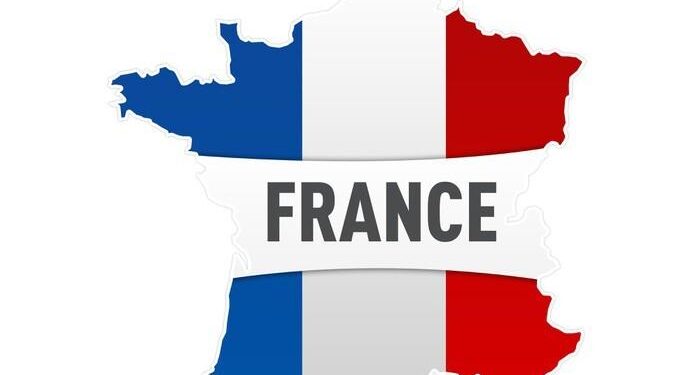In a significant move aimed at strengthening scientific collaboration and innovation, France, in partnership with the European Union, has launched the “Choose Europe for Science” conference, targeting a key demographic: American scientists. As global research landscapes evolve and competition for top talent intensifies, this initiative seeks to position Europe as an attractive hub for scientific inquiry and advancement. Taking place in Paris, the conference brings together policymakers, researchers, and industry leaders to showcase the continent’s rich scientific resources, funding opportunities, and collaborative networks. With the aim of building bridges across the Atlantic, the event underscores Europe’s commitment to fostering a vibrant research environment and highlights the pivotal role of transatlantic partnerships in tackling today’s pressing scientific challenges.
France and EU Launch Initiative to Enhance Scientific Collaboration with the US
In a bold move to fortify transatlantic ties, France and the European Union are spearheading a new initiative aimed at fostering scientific collaboration with the United States. The ‘Choose Europe for Science’ conference, recently held in Paris, served as a platform for government officials, academic leaders, and industry experts to discuss strategies for enhancing research partnerships. Key topics included funding opportunities, joint research projects, and the importance of creating more integrated scientific networks between Europe and the US. Among the initiatives proposed were:
- Increased Research Grants: Offering financial support tailored for collaborative projects.
- Exchange Programs: Facilitating talent mobility between US and European research institutions.
- Innovation Incubators: Establishing centers for joint experimentation and development.
This initiative aligns with broader goals of promoting innovation and addressing global challenges such as climate change, public health, and technology development. Notable figures attending the conference emphasized the necessity of leveraging diverse expertise to propel scientific advancements. The creation of a dedicated task force was also announced, aimed at streamlining regulatory procedures and reducing bureaucratic barriers for US scientists wanting to engage with European institutions. The anticipated impact of these efforts encompasses not only advancements in specific scientific fields but also a broader cultural exchange that strengthens the collaboration framework.
| Area of Focus | Description |
|---|---|
| Joint Research Grants | Financial aid for collaborative studies. |
| Talent Mobility | Programs to encourage researcher exchanges. |
| Innovation Hubs | Shared spaces for experimentation. |
Key Objectives of the Choose Europe for Science Conference Explored
The “Choose Europe for Science” conference aims to achieve several pivotal objectives designed to attract top-tier scientific talent from the United States to Europe. Key goals include fostering international collaboration, enhancing the visibility of European research institutions, and showcasing the diverse funding opportunities available. By creating an inviting environment for American scientists, the conference aspires to facilitate knowledge exchange and innovation across borders. This initiative is particularly crucial in the context of recent global scientific challenges, emphasizing the need for collective efforts in addressing pressing issues like climate change and health crises.
Moreover, the conference seeks to underline Europe’s commitment to maintaining a robust scientific ecosystem that supports interdisciplinary research and development. Attendees can expect to engage with prominent experts through various sessions, including:
- Panel Discussions: Insights from leading researchers on collaborative projects.
- Networking Opportunities: Building connections with industry leaders and academic institutions.
- Workshops: Hands-on sessions focused on grant applications and funding strategies.
Through these initiatives, the event not only highlights Europe’s scientific landscape but also aims to inspire a new generation of researchers to consider long-term career paths within the continent.
Strategic Recommendations for Attracting Top American Researchers to Europe
To successfully draw top American researchers to Europe, particularly in the wake of the ‘Choose Europe for science’ conference, a multi-faceted approach is essential. First, European institutions must enhance their funding opportunities and streamline the grant application process to make it attractive and accessible. Offering competitive salaries, tailored relocation packages, and substantial research funding can significantly elevate Europe’s standing as a viable research destination. Equally important is fostering collaborative networks between European and American institutions. Creating partnerships that allow for joint projects and exchanges can entice researchers to explore European avenues while maintaining their connection to American academia.
In addition to financial incentives and collaboration, promoting Europe as a vibrant cultural and academic hub will be critical. Highlighting the diverse and inclusive environments in which researchers can thrive—encompassing everything from state-of-the-art facilities to culturally enriching experiences—will resonate with potential candidates. Organizing workshops and informational sessions that showcase success stories from American scientists who have made the transition can further influence decisions. Lastly, establishing direct channels of communication and mentorship programs for incoming researchers can facilitate smoother transitions and bolster long-term commitments.
Concluding Remarks
the “Choose Europe for Science” conference marks a significant step in France and the European Union’s ongoing efforts to position Europe as a premier destination for scientific research and innovation. By strategically reaching out to American scientists and fostering international collaborations, the EU aims to enhance its global competitiveness in science and technology. As discussions unfold and partnerships strengthen, the success of this initiative could reshape the landscape of scientific inquiry on both sides of the Atlantic, reinforcing the notion that in an increasingly interconnected world, collaboration and exchange are key drivers of progress. The outcomes of this conference will be closely monitored as stakeholders from various sectors assess its impact on the scientific community and beyond.






























